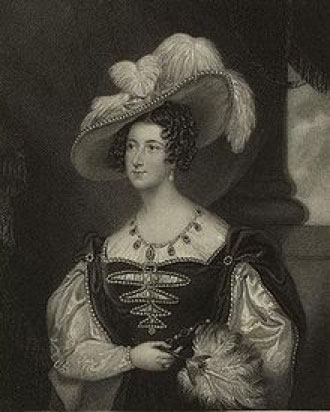The custom of a meal being taken mid-afternoon was started in the early 19th century by Anna, 7th Duchess of Bedford. She was the wife of Francis Russell, and sister- in- law to the Prime Minister, John Russell.
A lifelong friend of Queen Victoria, she had served as a lady of the bed chamber. During this period the habit of serving dinner at about 8 pm left the Duchess feeling ravenous by late afternoon. To ward off the hunger she would order each day at about 3 pm, tea, bread and butter, and cakes. Later on, she would invite friends to join her at home and the event became a great success.
The idea gradually spread generally into society, and tea rooms, and tea gardens sprang up everywhere. During the Edwardian period, taking afternoon tea became popular both at home where it was usually served in the drawing room, and in lounges of hotels. Ladies and gentlemen dressed formally for the occasion. Later tea dances became something of a phenomenon and despite rationing, lasted until well after the Second World War.
The social event lost its appeal when coffee bars were the place to be seen. However, from the late twentieth century, afternoon tea again became popular. Many restaurants and hotels throughout Britain now serve the meal for tourists and for those wanting to celebrate a special occasion. Famous London hotels, and department stores are particularly renowned in providing this traditional experience.
At the start of the meal, Champagne is sometimes provided, before the serving of various delicate sandwiches. They were invented in 1762 by John Montague the 4th Earl of Sandwich. He was playing cards, and not willing to leave the gaming table, asked for a serving of roast beef to be placed between two slices of bread so he could eat with his hands, without the need for cutlery.
Following sandwiches, scones, sometimes pronounced as scon, are served, with jam and cream. Whilst some guests prefer to place jam on the scone first, in the Cornish fashion, others spread cream first, which is the Devon tradition. All followed by delicious fancy cakes, and pastries.
Probably the most important item, good quality tea. One legend says that in 2737 BC, the Chinese Emperor Shen Nung noticed that a green leaf had blown into a bowl of boiling water, colouring the liquid and therefore creating the beverage.
The tea shrub is small and evergreen. The tips are picked, allowed to wither, then rolled, fermented and dried. The drink contains the stimulants tannin and caffeine. It was not until the 1660’s that the drink was made popular in England by Charles 11.
A familiar quandary, should it be milk or water first. Historically milk was poured first in order to protect the fine bone china, from the hot water. Some prefer to add the milk to the tea, stating that milk first in the cup lowers the temperature of the water, so a proper infusion can’t take place. Originally cultivated in China since early times, many other countries are now major producers.
An increasingly popular meal in Britain and throughout the world, as Henry James writes:” There are few hours in life more agreeable than the hour dedicated to the ceremony know as afternoon tea”.

